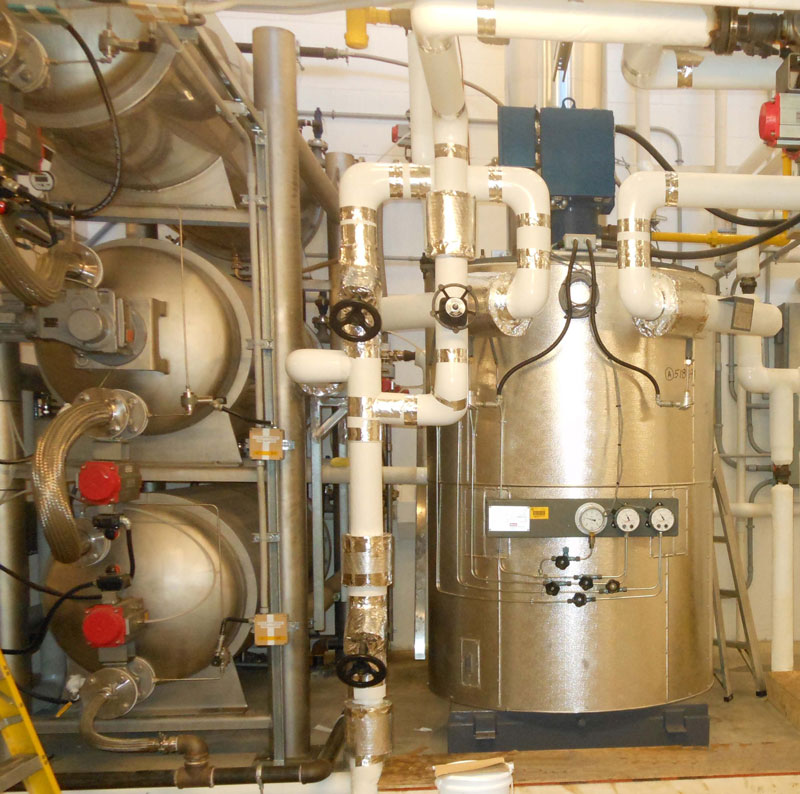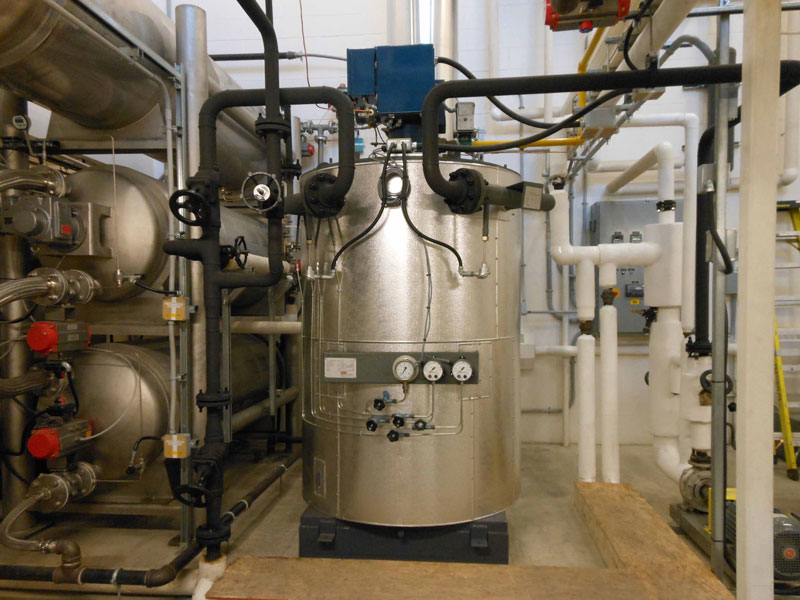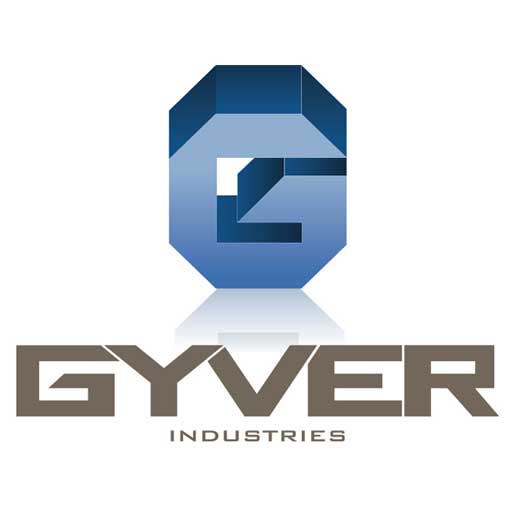In a laboratory setting, it is important to have all the proper equipment in place to deal with lab waste disposal, including means for effective effluent treatment. In addition to our work with tissue digesters, Gyver can assist any lab with installing or repairing an effluent decontamination system. Our process for effluent decontamination system installation is similar to the one we employ for tissue digester installation. That is, we can ensure the best possible installation when we are involved from the initial planning stages of the lab. With our extensive knowledge of both scientific and mechanical considerations, we can provide input that respects the realistic laboratory setting. (Please read “Gyver Industries: Integrating Science and Mechanics for Optimal Installations” for more information about our background and skills.)
Each effluent decontamination system provides effluent treatment with a stacked three-tank processing batch arrangement that uses a paddle system. The first (upper) tank preheats the effluent at 95 degrees Celsius; the second (middle) tank heats it to a temperature of 121 degrees Celsius for 30 minutes while using a paddle system to ensure stratification of fluids and suspension of any solids; and the third (lower) tank cools it down to 35 degrees Celsius. The effluent can then be safely discharged to the local municipal sewer.
Though effluent treatment is separate from tissue digestion, the two are integrated. For some labs (generally those with smaller amounts of effluent), it may make more sense to run lab waste effluent through Gyvers tissue digester, rather than through an effluent decontamination system. Or if your facility has a designated collection tank for SRM water; this water can be processed through Gyvers tissue digesters in order to hit the higher temperatures and pressures required for decontamination.
Gyver’s effluent decontamination systems range from smaller models that can handle 10,000 liters per day to larger models that can handle up to 50,000 liters per day. Small units (which are about 10’ in height) require a footprint of up to 14’ x 10’, while larger units (which are about 18’ in height) require a footprint of 25’ x 15’.
The stainless steel units are self cleaning and require little maintenance. Installation of each unit includes customized training. Gyver offers 24-hour phone service, and a 48-hour on-site response time for mechanical issues that can’t be resolved by phone. All our machines are guaranteed, and we offer maintenance and support packages for our machines and others, as well as a full one-year warranty on labor and parts.
If you’re ready to take the next step, call (970) 568-4220, or send an e-mail to gyversboss@gyverindustries.com for more information.
Meanwhile, we invite you to visit our products page to find out about our full line of animal waste digesters.
In a laboratory setting, it is important to have all the proper equipment in place to deal with lab waste disposal, including means for effective effluent treatment. In addition to our work with tissue digesters, Gyver can assist any lab with installing or repairing an effluent decontamination system. Our process for effluent decontamination system installation is similar to the one we employ for tissue digester installation. That is, we can ensure the best possible installation when we are involved from the initial planning stages of the lab. With our extensive knowledge of both scientific and mechanical considerations, we can provide input that respects the realistic laboratory setting. (Please read “Gyver Industries: Integrating Science and Mechanics for Optimal Installations” for more information about our background and skills.)
Each effluent decontamination system provides effluent treatment with a stacked three-tank processing batch arrangement that uses a paddle system. The first (upper) tank preheats the effluent at 95 degrees Celsius; the second (middle) tank heats it to a temperature of 121 degrees Celsius for 30 minutes while using a paddle system to ensure stratification of fluids and suspension of any solids; and the third (lower) tank cools it down to 35 degrees Celsius. The effluent can then be safely discharged to the local municipal sewer.
Though effluent treatment is separate from tissue digestion, the two are integrated. For some labs (generally those with smaller amounts of effluent), it may make more sense to run lab waste effluent through Gyvers tissue digester, rather than through an effluent decontamination system. Or if your facility has a designated collection tank for SRM water; this water can be processed through Gyvers tissue digesters in order to hit the higher temperatures and pressures required for decontamination.
Gyver’s effluent decontamination systems range from smaller models that can handle 10,000 liters per day to larger models that can handle up to 50,000 liters per day. Small units (which are about 10’ in height) require a footprint of up to 14’ x 10’, while larger units (which are about 18’ in height) require a footprint of 25’ x 15’.
The stainless steel units are self cleaning and require little maintenance. Installation of each unit includes customized training. Gyver offers 24-hour phone service, and a 48-hour on-site response time for mechanical issues that can’t be resolved by phone. All our machines are guaranteed, and we offer maintenance and support packages for our machines and others, as well as a full one-year warranty on labor and parts.
If you’re ready to take the next step, call (970) 568-4220, or send an e-mail to gyversboss@gyverindustries.com for more information.
Meanwhile, we invite you to visit our products page to find out about our full line of animal waste digesters.



